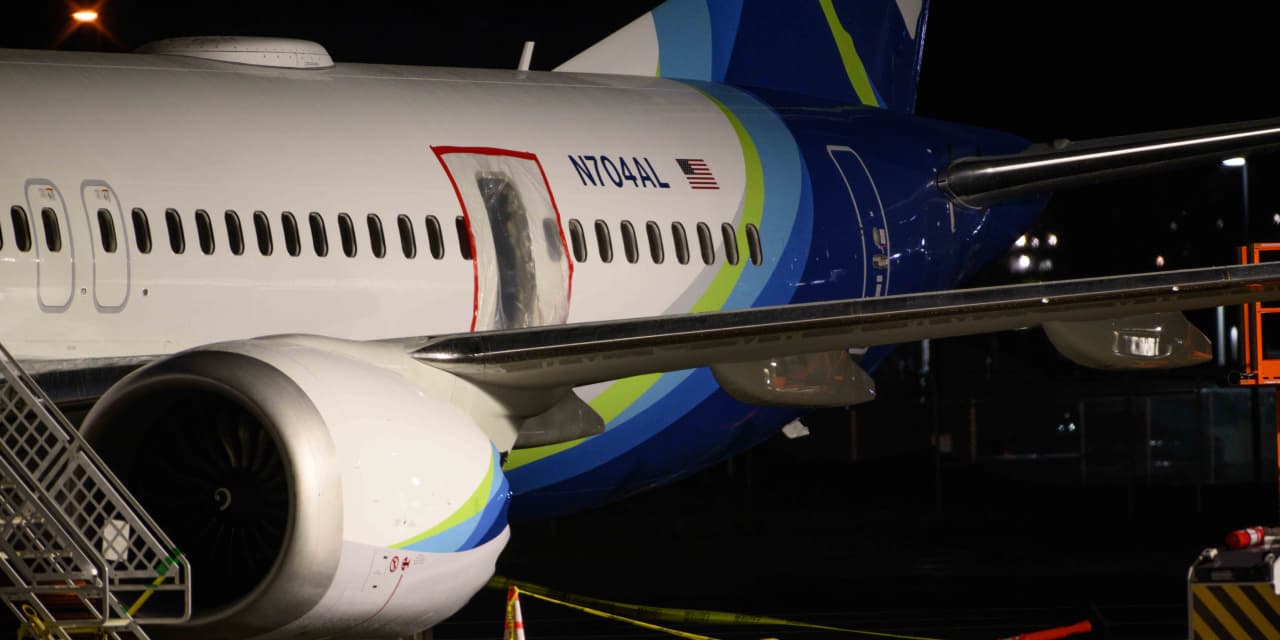Boeing
stock has been in freefall since an emergency door plug blew out of an
Alaska Air Group
737 MAX 9 jet. Investors just don’t have a good way of estimating how long MAX 9 jets will be grounded, and what it will end up costing Boeing in terms of customer compensation, repairs, and delayed and canceled orders—not to mention the less-quantifiable damage to the brand.
Shares, however, were rising early Wednesday after the Federal Aviation Administration completed some of its work. It’s progress.
The FAA, on Wednesday, announced it finished inspecting 40 MAX 9 jets. About 171 were grounded by the agency. That doesn’t mean they are returning to service, through. “The FAA will thoroughly review the data from them. All 737 9 MAX aircraft with door plugs will remain grounded pending the FAA’s review and final approval of an inspection and maintenance process that satisfies all FAA safety requirements,” reads part of the news release. “Once the FAA approves an inspection and maintenance process, it will be required on every grounded 737 9 MAX prior to future operation.”
Boeing stock was up about 2% in early trading, above $204, while the
S&P 500
and
Dow Jones Industrial Average
were down 0.6% and 0.1%, respectively.
Coming into Wednesday trading, Boeing shares were down almost 20% since the Alaska Air incident. Shares had dropped five of the six trading days since the MAX 9 problem.
Shares dropped almost 8% on Tuesday. That “felt like a capitulation,” wrote Deutsche Bank analyst Scott Deuschle on Wednesday, pointing out that the stock dropped without much incremental news about the MAX 9. “While we still see downside risk from additional negative headlines, we think it’s likely capped at $180, and we see upside to our 12-month target price of $295.” He rates shares at Buy.
Jefferies analyst Sheila Kahyaoglu rates shares at Buy, too, with a price target of $315. Kahhyaoglu wrote in a recent report that Boeing has added quality inspectors and that 2024 737 MAX 9 production shouldn’t be impacted by the grounding. The delay, while serious, is only temporary.
Investors don’t have a good way to estimate when the FAA will be done, and how long it will take the planes to get back in the air. Still, both analysts see the recent dip as a buying opportunity
At least the MAX 9 is a relatively low-volume product for Boeing. It is expected to account for roughly 30 out of the 700 deliveries for Boeing in 2024.
Write to Al Root at [email protected]
Read the full article here




